Honey gourami - Trichogaster chuna
Scientific name: Trichogaster chuna
Common name: Honey gourami
Family: Osphronemidae
Usual size in fish tanks: 4 - 6 cm (1.57 - 2.36 inch)
014
Recommended pH range: 6 - 8
Recommended water hardness: 4 - 12°N (71.43 - 214.29ppm)
0°C 32°F30°C 86°F
Recommended temperature range: 23 - 30 °C (73.4 - 86°F)
The way how these fish reproduce: Spawning
Where the species comes from: South Asia
Temperament to its own species: peaceful
Temperament toward other fish species: peaceful
Usual place in the tank: Middle levels
Food and feeding
The Honey Gourami is an omnivorous species that thrives on a varied diet. They will readily accept commercial fish food such as flakes, granules, or pellets. To keep them healthy and vibrant, it's essential to supplement their diet with live or frozen foods like bloodworms, brine shrimp, and daphnia. Adding vegetable-based foods such as spirulina flakes or blanched spinach and peas ensures a well-balanced diet. Feeding should be done once or twice daily, and only as much as they can consume within a few minutes to avoid overfeeding and poor water quality.
Origin
The Honey Gourami (Trichogaster chuna) is native to the slow-moving waters of the Indian subcontinent, specifically in rivers, ponds, and lakes of Bangladesh and India. These waters are typically warm and densely planted, providing plenty of hiding spots. The Honey Gourami thrives in calm, sheltered waters with lots of vegetation, which should be replicated in the aquarium to ensure their comfort.
Sexing
Sexing Honey Gouramis can be challenging, especially outside of the breeding season. Males are usually more vibrantly colored, often showing a bright honey or orange coloration with black on their throats and underbellies. Females, in contrast, tend to be paler and more silver in color. During breeding, the male's colors intensify further, making it easier to distinguish between the sexes.
Breeding
Honey Gouramis are bubble-nest builders, similar to other gourami species. During breeding, the male constructs a bubble nest at the surface of the water, usually among floating plants. To encourage breeding, maintain warm water temperatures between 26-28°C (78.8-82.4°F) and provide soft water with a slightly acidic to neutral pH (6.0-7.0). Once the female lays her eggs, the male takes responsibility for guarding the nest and tending to the eggs until they hatch. The fry become free-swimming after about 3 days and can be fed newly hatched brine shrimp or microworms as their first food.
Lifespan
With proper care, Honey Gouramis can live for 2-5 years in captivity. Ensuring a clean, stable tank environment and providing a varied diet will help maximize their lifespan.
Tank Requirements
Honey Gouramis are relatively small fish, but they still require a well-planted tank with a minimum capacity of 40 liters (10 gallons) for a pair or a small group. They prefer soft, slightly acidic to neutral water with a temperature range of 23-30°C (73.4-86°F) and a pH between 6.0 and 8.0. Water hardness should be kept between 4-12°dGH. Ensure the water flow is gentle, as these fish inhabit slow-moving waters in the wild.
The aquarium should be densely planted with species like Anubias, Java fern, or Cryptocoryne, which provide shelter and hiding spots. Floating plants like Salvinia or Pistia are also beneficial, as they help mimic the subdued lighting conditions that Honey Gouramis prefer.
Tankmates
Honey Gouramis are peaceful fish that do well in community tanks with other calm species. Avoid keeping them with aggressive or fin-nipping fish. Suitable tankmates include:
- Ornate Cory (Corydoras ornatus)
- Black Neon Tetra (Hyphessobrycon herbertaxelrodi)
- Ember Tetra (Hyphessobrycon amandae)
- Panda Corydoras (Corydoras panda)
They can also be housed with other peaceful gouramis, provided the tank is spacious enough to avoid territorial disputes.
Short Description
The Honey Gourami (Trichogaster chuna) is a small, peaceful species that is perfect for community tanks. With their vibrant honey or orange coloration and peaceful nature, they make a delightful addition to any planted aquarium. Honey Gouramis are bubble-nest builders and are relatively easy to breed in home aquariums. Due to their small size and peaceful temperament, they are best kept with other non-aggressive tankmates in a well-planted tank with soft, warm water. Regular water changes, good filtration, and a varied diet are key to keeping these fish healthy and vibrant.
Pictures
Bought by aqua-fish.net from jjphoto.dk
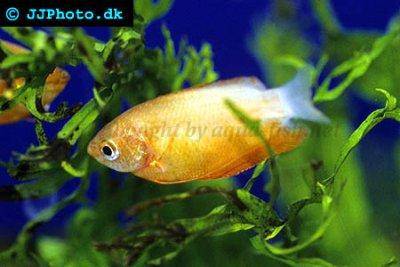


 Akar
Akar  Whiteseam
Whiteseam 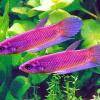 Giant
Giant  Betta
Betta  Slender
Slender 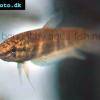 Betta
Betta 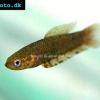 Brown’s
Brown’s  Snakehead
Snakehead  Wine
Wine  Edith’s
Edith’s  Blue
Blue  Betta
Betta 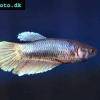 Peaceful
Peaceful  Kapaus
Kapaus  Eyespot
Eyespot  Spotted
Spotted  Forest
Forest  Schaller’s
Schaller’s  Siamese
Siamese  Chukai
Chukai 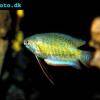 Banded
Banded  Dwarf
Dwarf  Frail
Frail  Paradise
Paradise 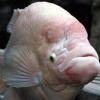 Giant
Giant  Giant
Giant  Licorice
Licorice  Chocolate
Chocolate  Thick
Thick  Pearl
Pearl  Moonlight
Moonlight  Snakeskin
Snakeskin  Blue
Blue